hankyoreh
Links to other country sites 다른 나라 사이트 링크
[Seoul travels] The many faces of Seoul and Itaewon
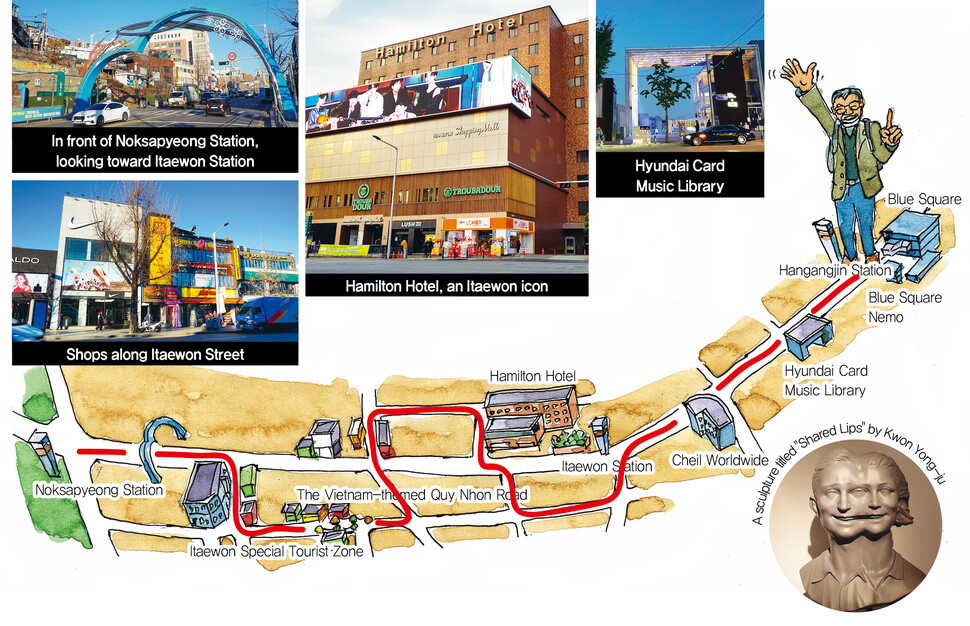
One evening, while I was trying to pass through the tedious tunnel of the pandemic as an “inner emigre,” I heard my mobile phone ringing.
The call was from a friend who is battling cancer. When I answered the phone, trying to shove back anxious fears, my friend started the conversation with a joke, as if to reassure me.
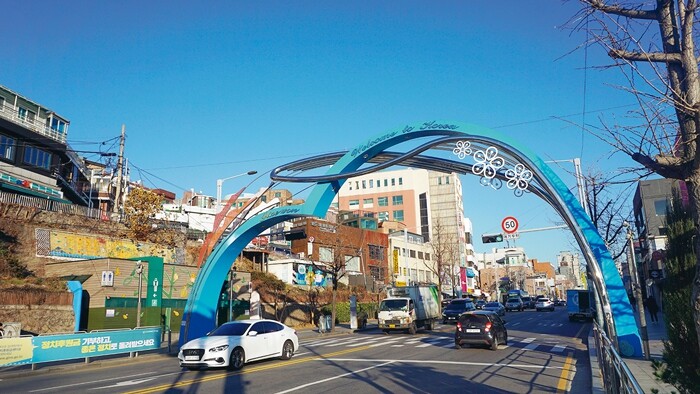
“If this is how raucous I get when I call you lying down, just imagine how it would be if I called you standing up! When you lose your sense of humor, you’ve lost everything, don’t you think?” my friend said with a chuckle. It was hardly the voice I’d expected from someone who was about to be hospitalized for another round of treatment.
When men talk on the phone, the call is usually over in a minute, but our chat lasted for more than half an hour. Before hanging up, he told me something in a serious tone of voice.
“I get the impression that you’re still writing late into the night, but I wish you wouldn’t do that. When you’re in my position, you come to realize what’s important in life. Money, fame, status — you don’t need any of that. I hope you’ll put the priority on your health.”
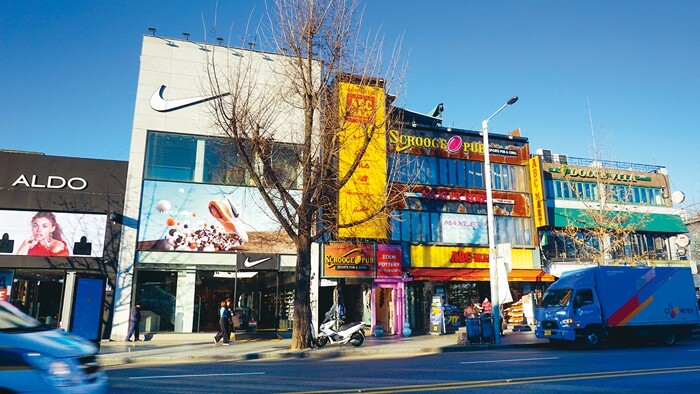
I could barely manage to keep the tears out of my eyes. It was hard to tell who was the patient and who was offering comfort.
The next day, I decided to heed his advice. Standing up from my desk, I headed outside. Being alive is the state of writhing and striving to change. I suppose that’s what English speakers mean when they talk about “moving on.”
So I resolved to take a stroll down Itaewon Street. For one thing, the time had come to wrap up my series of essays about walking the streets and alleyways of Seoul, called “Seoul Travels” in translation, but “Sympathy” in Korean. And it just happened that Blue Square was holding an interesting exhibition on the theme of “sympathy.”
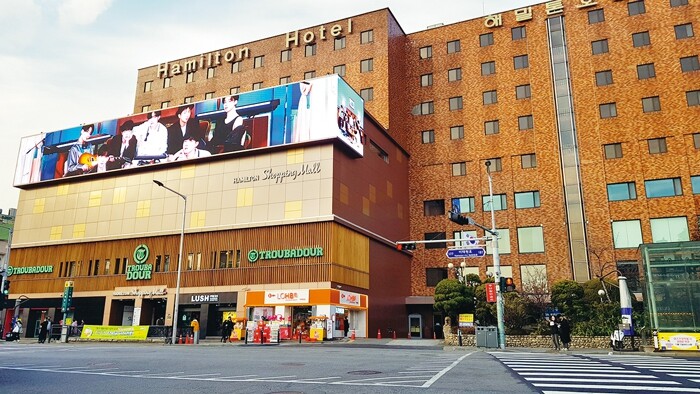
Even though I’ve spent most of my life in Seoul, aside from the years I spent working overseas, the city remains a strange place to me.
It has so many different personas that it’s difficult to tell which is its true face. They call the whole neighborhood Itaewon, but on either side of the Hamilton Hotel and Cheil Worldwide you find very different looks. The areas to the west and south are dominated by traditional markets, working class housing, and multicultural spaces, but to the east and north toward Hangangjin Station is an extension of the Hannam neighborhood, filled with luxury housing and brand-name stores.
While it encompasses three subway stations — Noksapyeong, Itaewon, and Hangangjin — it's about two kilometers by foot. I got off at Noksapyeong Station and started things off with a tour of the antique market and Itaewon Market area at the entrance. I could tell it was the special Itaewon tourism zone from the signs advertising “plus size” clothing, but the atmosphere still eluded me. The Vietnam-themed Quy Nhon Road appeared positively chilly with its decorative street lights and deer sculpture.

Emerging onto the main road again, I saw a number of stores near the Itaewon Station intersection selling Turkish kebabs. The area behind Hamilton Road had been thronged with gastronomes seeking out a variety of cuisine on Itaewon’s “food street,” including Indian curries, skewered meat dishes from the Balkan Peninsula, and Brazilian food. But the mood was similarly flat.
Itaewon is considered one of Seoul’s top three club districts alongside Hongdae and Gangnam. Most of the clubs are clustered around the Itaewon Station intersection. The nearby side streets are where the waves of British pop culture and craft beer first started in South Korea. Gay and transgender bars and other LGBT clubs can be seen on the side streets near Usadan Road behind the Itaewon Fire Station. These clubs have drawn public ire ever since a COVID-19 infection cluster originated here last May.
The road behind the Itaewon police station has so many black residents that it has earned the nickname “Nigeria Alley.” Nearby is Seoul Central Mosque. Uzbek residents who once lived around Dongdaemun started moving to the area around Usadan Road 10 a few years ago. Many grocery stores can be seen advertising Middle Eastern halal food.
Some distance away from Hamilton Hotel toward Bogwang Road is Antique Street, with stores selling expensive old furniture. Returning to the main thoroughfare of Itaewon Road, I proceeded past the marketing firm Cheil Worldwide toward Hangangjin Station. The stretch between Itaewon Fire Station and Hangangjin Station is known as Hannam Tree-Lined Road. It’s a snazzy street with its luxury car showrooms, fashion leader boutiques, and high-end restaurants, but here too the pandemic’s reach could be felt. To one side are Leeum, the Samsung Museum of Art, and Yongsan International School of Seoul; across the street is the Hyundai Card Music Library.
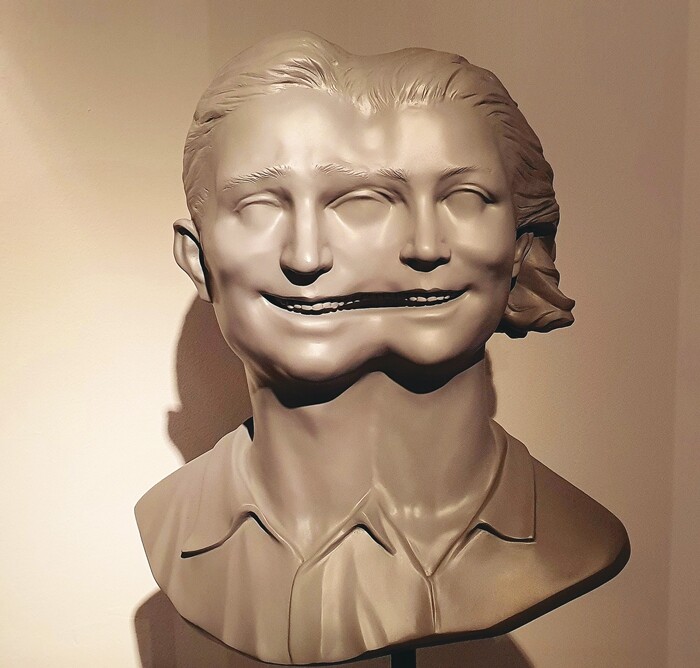
I arrived at the Blue Square Nemo venue next to Hangangjin Station. Entering the “World We Made” exhibition — organized by the T&C Foundation on the theme of “sympathy” — I was greeted by a parrot-shaped sculpture and a message on the wall.
“Have you heard?”
It’s an illustration of how the titillating rumors we hear and unthinkingly share can snowball into the monsters of discrimination and hate. Even seemingly educated people can don masks of anonymity to contribute to hatred as they support or condone baseless gossip. This is the damage that comes from twisted “sympathy,” where we mistakenly think it’s good to go along with what others say. A work entitled “Worm-Eaten Forest” appears beautiful when seen from a distance, but is pitted with holes at its center. This is the prejudice and discrimination toward senior citizens, disabled persons, and different cultures — all because of trivial differences in skin, age, and clothing.
Perhaps the most heartbreaking stories are the ones that have yet to be written in the world. I’m reminded of what the Japanese writer Natsume Soseki wrote in “I Am a Cat”: “Knock on the hearts of seemingly carefree people, and you’ll hear faint sounds of pain from within.”
We live in a world with many fake things: fake smiles, fake happiness, fake love, fake friendship, and fake sympathy. While it is wrong to deceive others, it is also foolish to fall for others’ deceptions. The aim of the exhibition was to show a somewhat uncomfortable aspect of our society in the hopes of seeking out ways of achieving tolerance and coexistence; it also blends in well in its Itaewon surroundings. My trip through the side streets was an attempt to see things from a perspective not available on the main drag.
Now is a time when people need comfort more than ever. Genuine consolation and sympathy can work miracles. As difficult as things are, we have to weather this moment.
By Son Kwan-seung, travel writer
Please direct comments or questions to [english@hani.co.kr]
Edited by Seoul&
Editorial・opinion
![[Column] Season 2 of special prosecutor probe may be coming to Korea soon [Column] Season 2 of special prosecutor probe may be coming to Korea soon](https://flexible.img.hani.co.kr/flexible/normal/500/300/imgdb/original/2024/0426/3317141030699447.jpg) [Column] Season 2 of special prosecutor probe may be coming to Korea soon
[Column] Season 2 of special prosecutor probe may be coming to Korea soon![[Column] Park Geun-hye déjà vu in Yoon Suk-yeol [Column] Park Geun-hye déjà vu in Yoon Suk-yeol](https://flexible.img.hani.co.kr/flexible/normal/500/300/imgdb/original/2024/0424/651713945113788.jpg) [Column] Park Geun-hye déjà vu in Yoon Suk-yeol
[Column] Park Geun-hye déjà vu in Yoon Suk-yeol- [Editorial] New weight of N. Korea’s nuclear threats makes dialogue all the more urgent
- [Guest essay] The real reason Korea’s new right wants to dub Rhee a founding father
- [Column] ‘Choson’: Is it time we start referring to N. Korea in its own terms?
- [Editorial] Japan’s rewriting of history with Korea has gone too far
- [Column] The president’s questionable capacity for dialogue
- [Column] Are chaebol firms just pizza pies for families to divvy up as they please?
- [Column] Has Korea, too, crossed the Rubicon on China?
- [Correspondent’s column] In Japan’s alliance with US, echoes of its past alliances with UK
Most viewed articles
- 1‘We must say no’: Seoul defense chief on Korean, USFK involvement in hypothetical Taiwan crisis
- 2AI is catching up with humans at a ‘shocking’ rate
- 3S. Korea “monitoring developments” after report of secret Chinese police station in Seoul
- 4The dream K-drama boyfriend stealing hearts and screens in Japan
- 5[Column] Can we finally put to bed the theory that Sewol ferry crashed into a submarine?
- 6[Editorial] Yoon cries wolf of political attacks amid criticism over Tokyo summit
- 7Doubts remain over whether Yoon will get his money out of trip to Japan
- 8[Photo] “Comfort woman” survivor calls on president to fulfill promises
- 9[Editorial] Was justice served in acquittal of Samsung’s Lee Jae-yong?
- 10Is N. Korea threatening to test nukes in response to possible new US-led sanctions body?